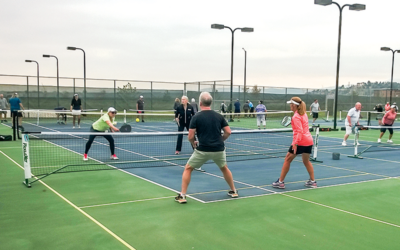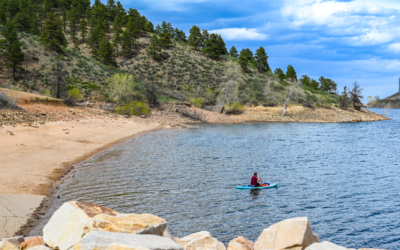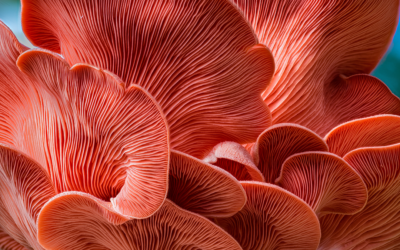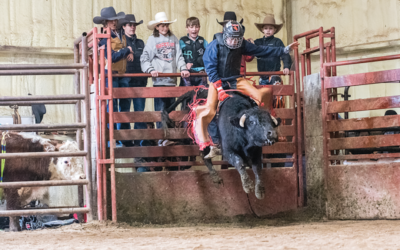Gardening is touted for its many benefits, from boosting your mental well-being to helping the environment by fostering plant growth. But the hobby has a lifelong learning curve, and it’s one that can’t be perfected, says Alison O’Connor, a Colorado State University Extension professor of horticulture who coordinates Larimer County’s Master Gardener program.
Since gardening styles, skill levels and the amount of time you have to devote to your garden vary (even from one year to the next), the experts we spoke with agree that the goal is successful, not stressful, gardening.
“Gardening should be joyful, not drudgery,” O’Connor says. “If your grandma had a pot of red geraniums on her porch every year, grow them. And if you don’t eat tomatoes, don’t grow them.”
Beginner versus experienced
Gardeners of all abilities often start off on the wrong foot by not having a good base soil, whether that’s in the ground, in pots or in raised beds, says Michelle Heronema, greenhouse manager at The Windsor Gardener.
She cautions that while you might be a savvy gardener in other parts of the country, Colorado’s hard clay soil knocks you down to beginner status.
“In Colorado, we need to amend the soil for root development and good plant nutrition,” Heronema says. “Root crops, like carrots, do better in the ground if it’s not clay because the roots are fighting the tough soil.”
For in-ground garden beds, she recommends amending the soil with a variety of organic materials from living sources, like aged manure and composted plant material, to break up the clay. The ideal ratio is one-third organic material to two-thirds native soil, and it should be evenly mixed into the top foot of the ground you’re planting in.
In pots and containers, heavy clay and topsoil retain moisture, preventing drainage and causing plants to rot. Instead, Heronema recommends using potting soil and peat-based coco fiber mixed with compost and fertilizer. Raise the pots off the ground on a stand or with pot feet to allow them to drain and breathe.
Heronema finds that raised beds are an ideal solution to Colorado’s clay problem because you can fill them with your choice of weed-free topsoil, resulting in fluffier and more fertile soil.
“The initial cost to build and fill raised beds is an investment, but you don’t have to kneel down on the ground to weed, you can sit on the edge to pick ripe vegetables, there are fewer pests and it keeps dogs out,” she says.
O’Connor advises beginners to start small. She suggests two pots for a tomato and a pepper, low-maintenance plants (like some flowering native perennials, succulents and evergreens) or a small pollinator garden.
“With more experience, you learn to predict weather patterns, like hail in July and August or the possibility of an early frost in September,” she says.
Beginner gardeners are mainly excited to harvest their first tomato, she says, whereas advanced gardeners know how to manage some of those weather patterns. That’s why advanced gardeners might grow okra or longer-season vegetables, like squash or melons, in addition to tomato varieties that take longer to ripen.
Planting different grass species, knowing when to use herbicides instead of pulling weeds and properly diagnosing pests are all things that come with experience. The CSU Extension blog, master gardener program and local garden centers offer resources for problem-solving along the way.
“The challenge is the beauty of it,” Heronema says. “You learn how to do it a little better each year: how to fertilize, where to place things, which type of tomato to plant. You never hit a point of being an expert.”
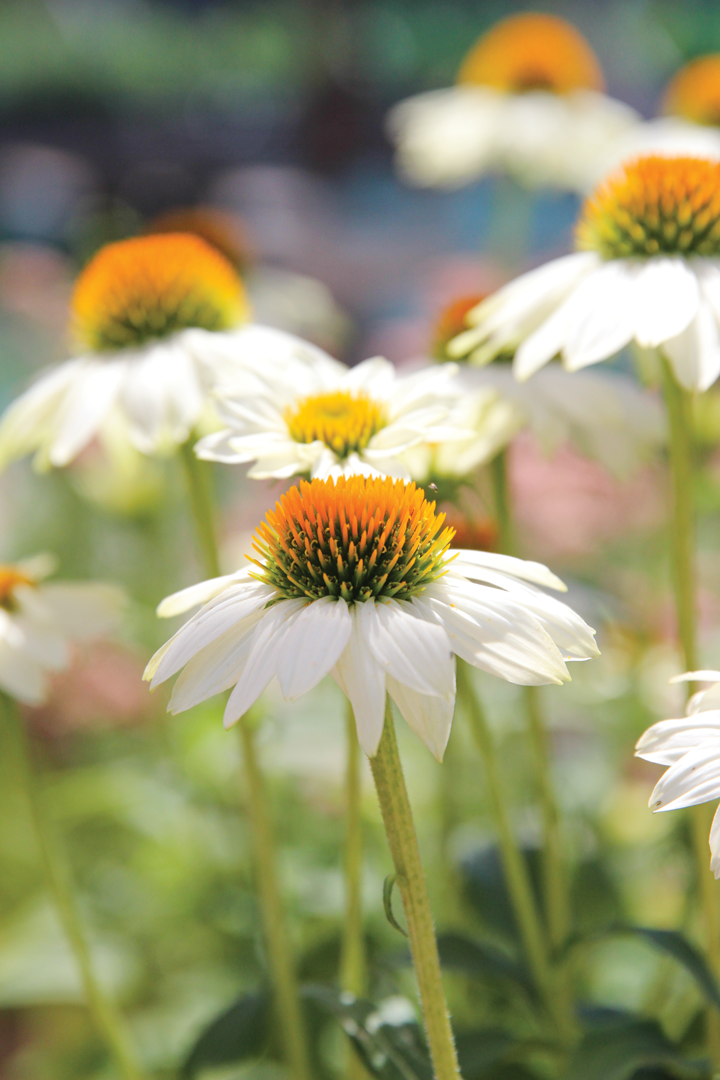
Plants for all Skill Levels
Bath Garden Center & Nursery has been in business in Fort Collins for more than 50 years. Social media coordinator Elcee Evershed sheds light on plant options for beginners and experienced gardeners.
Beginners
If you’ve never touched dirt in your life, start with annuals. Here are some to try:
Marigolds. A pollinator-friendly annual that reseeds easily.
Salvia. A pollinator that attracts butterflies and bees.
Pansies. Hardy and tolerant of cold weather in the spring and fall.
Geraniums. Easy to care for with optional deadheading.
Petunias. A low-maintenance, long bloomer that’s good for pots and hanging baskets.
Easy perennials survive the winter, have low water needs and reseed effortlessly. Look for:
Coneflowers. Beautiful blooms in many colors.
Tickseed. Small yellow, white and orange blooms that thrive in direct sun.
Black-eyed Susans. Large yellow flowers with a black center, adding height to a landscape design.
Experienced gardeners
If you’ve made it to year two, you’re ready for more challenges. Try these annuals:
Dahlias. Large, showy blooms. Must dig up bulbs in the fall for cellaring to promote dormancy.
Fuchsia. Intricate blossoms in pink, purple and white. Finicky but make beautiful hanging baskets.
Vinca flowering vine. A sprawling vine with small blue flowers.
Angelonia. A tall, orchid-like flower in many colors.
Diascia. Delicate yet bushy florals.
These perennials require pest maintenance and the right location to thrive:
Agastache. Spiky spires in purple, pink, blue, white and orange. Good for tea and attracting hummingbirds with its minty licorice smell.
Hosta. Adds foliage and covers a large area with big leaves that are easily damaged by hail.
Columbine. The blue-and-white variety is Colorado’s state flower. Susceptible to powdery mildew.
Bleeding heart. A delicate shade lover with heart-shaped pink flowers.
Lazy versus overzealous
O’Connor says gardeners can’t be lazy, but they can be deliberately choosy about the time and money invested each season as well as the type of plants they care for. She says it’s also okay to be tired of gardening in the heat of July, when fun activities are calling or you want to cool off in the pool.
She encourages self-proclaimed lazy gardeners to reach out for help when they need it. “Learning and understanding the ‘why’ is just as important as understanding how to garden,” she says, and working with a landscape designer or someone who can help you select plants is a great first step.
To make gardening simpler, Heronema suggests buying plant starts at local nurseries since starting seeds indoors is challenging if you don’t have enough light. Although you’re limited to what’s in stock, O’Connor notes that starts eliminate any guesswork about the planting timeline. Starts can be planted after the last frost, usually near the end of May.
If you’re overzealous, consider designing an entirely new landscape, changing irrigation plans and setting a timeline to execute it, O’Connor says. She counsels patience, too.
“I’ll try to grow a plant three times, like ice plants,” she says. “I’ve never been successful and have to accept that it’s not a plant for my garden.”
Giddy gardeners can also start planting certain things earlier in the spring, say April
or early May, including some perennials, shrubs and trees.
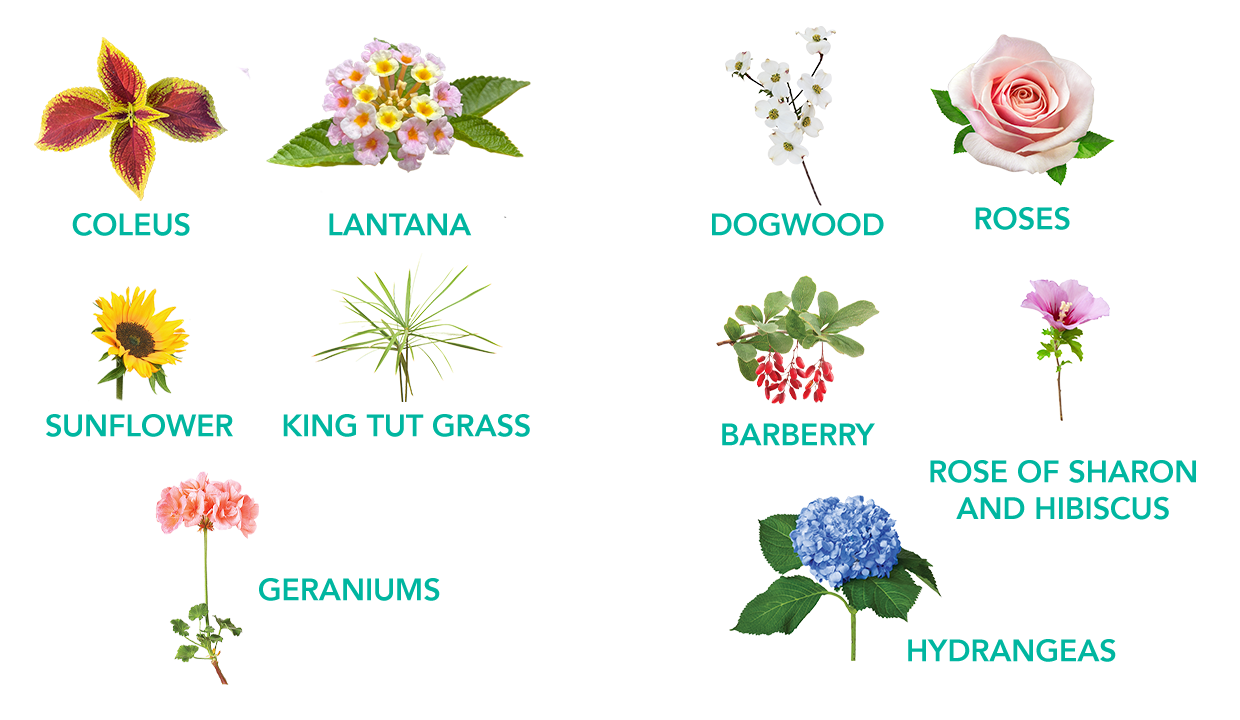
Go Big or Go Small
Lazy Gardeners
Evershed recommends smaller gardens if you prefer less work, but again, she emphasizes that gardening isn’t a lazy activity. Choices include:
- Potted annuals and herb gardens.
- Easier veggies, including some tomatoes, strawberries, potatoes, peppers and leafy greens.
Overzealous Gardeners
In larger spaces, fervent gardeners can go big for showiness. Evershed selects these plants:
- Coleus – Large, velvety leaves that add color and texture
-
Lantana – Showy; must deadhead spent flowers for re-blooming
-
King Tut grass – Great for pot centers or incorporating into garden beds
-
Sunflowers – Add height in sunny spaces
-
Geraniums – Another showy option; must deadhead for re-blooming
Perennials
Evershed also recommends perennials that require pruning every year and/or specific soil amendments.
These include:
-
Dogwood – Small white flowers with a tropical appearance
-
Roses – Require frequent pruning; deadheading withered flowers promotes repeat blooming
-
Barberry – A leafy shrub with thorns and bright red berries
-
Rose of Sharon and hibiscus – Large edible flowers
-
Hydrangeas – Clusters of blooms come in shades of white, pink (in alkaline soil) and blue (in acidic soil) that can be managed by adding different products to the soil
Beauty versus function (or a combination)
Functional plants can be beautiful too, O’Connor says, pointing to eggplant’s appealing plum-colored fruit and lavender’s pale purple blossoms, both of which are edible.
Pollinator plants are beautiful when in bloom and attract bees, butterflies and other insects to your garden. Many low-growing plants, called “groundcovers,” produce early spring flowers and protect against soil erosion later in the season.
O’Connor says turf often gets a bad name that isn’t warranted: “It cools our environment, offers a place to play, adds color and sequesters oxygen, but we manage it incorrectly. It’s important to plant things that are adaptable and thrive in Colorado.”
These include water-wise native species and ornamentals, like blonde ambition grass, a cultivar of blue gramma grass that adds texture. Junipers are beautiful and functional too, providing privacy and adding interest in the winter with their cones.
Flowers versus veggies
If you have to decide between growing flowers or vegetables, O’Connor advises growing what you like. Whichever you choose, Heronema recommends daily watering checks, especially as temperatures creep up in the summer. For flowers, check once in the morning and again in the evening if they’re planted in full sun (six or more hours of direct sunlight). Vegetables also need more water in the dog days of summer, but changing their moisture content can cause problems.
“More water causes blossom-end rot on the bottom of tomatoes, turning them black,” Heronema says. “It’s a calcium deficiency because morning water can dry the plant out by the end of the day, and uneven moisture throughout the day causes the imbalance.” Adding agricultural limestone early when planting tomatoes in a pot or in the ground helps avoid rot, or you can spray them with liquid calcium.
Heronema encourages parents to teach their kids how to help out with the gardening too. “They’ll learn that food doesn’t just come from a package,” she says.
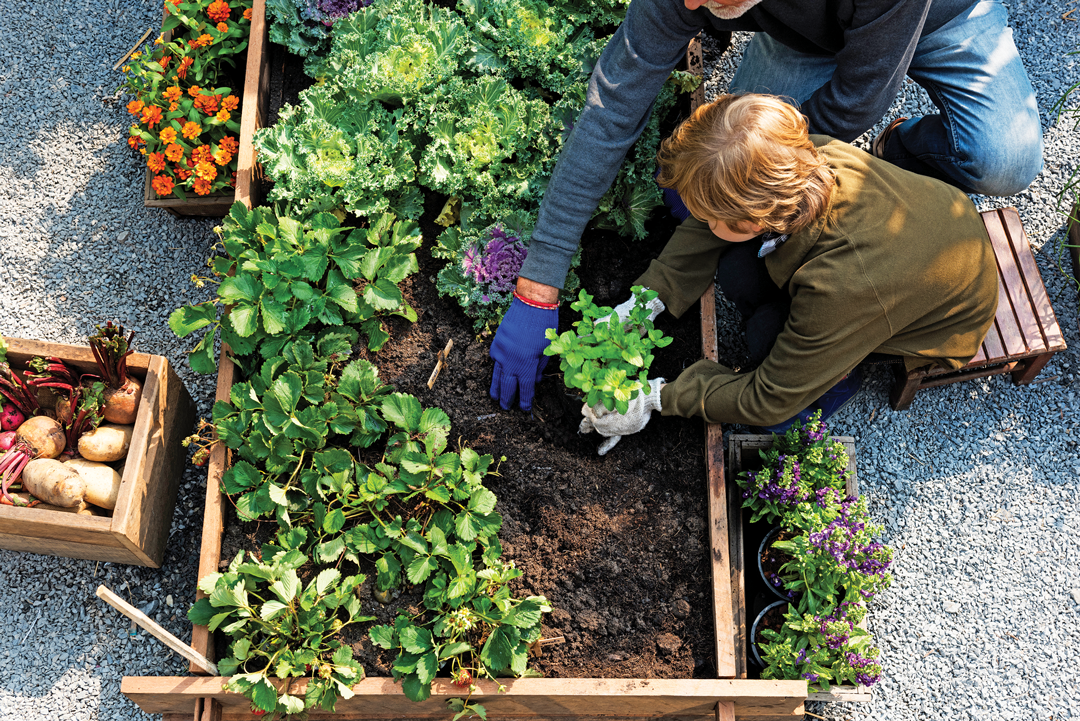
Plants for pollinators
Function is abundant in pollinator-friendly plants, Evershed says, like Agastache, bee balm, penstemon and tickseed. Use groundcovers, such as Veronica, sedum, blue star creeper and sweet woodruff, to disguise paver cracks or weed control.
Cut flower gardens also offer beauty and function, giving design dimension to bouquets while feeding pollinators. Examples include dianthus, coneflowers, yarrow, peonies, lavender and delphinium. For privacy, try wisteria, honeysuckle, hops and hibiscus.
Those seeking show-stopping beauty can add anemones, rudbeckia, hearty hisbiscus, tall Veronica, ground succulents (like hens and chicks), bleeding heart and stunning orange poppies.
Vegetables
Evershed advises gardeners to plant with a goal in mind, whether that’s to create a functional garden that provides food or flowers for a beautiful landscape. Colorado’s climate is ideal for these vegetables:
• Tomatoes
• Lettuces and leafy greens
• Squash
• Root vegetables
• Other veggies based on sunlight, soil and other factors
If you want to add edible flowers to your vegetable garden, consider planting pansies, begonias, marigolds and hibiscus in addition to various medicinal and culinary herbs.


